Time After Time – Art Meets Fashion
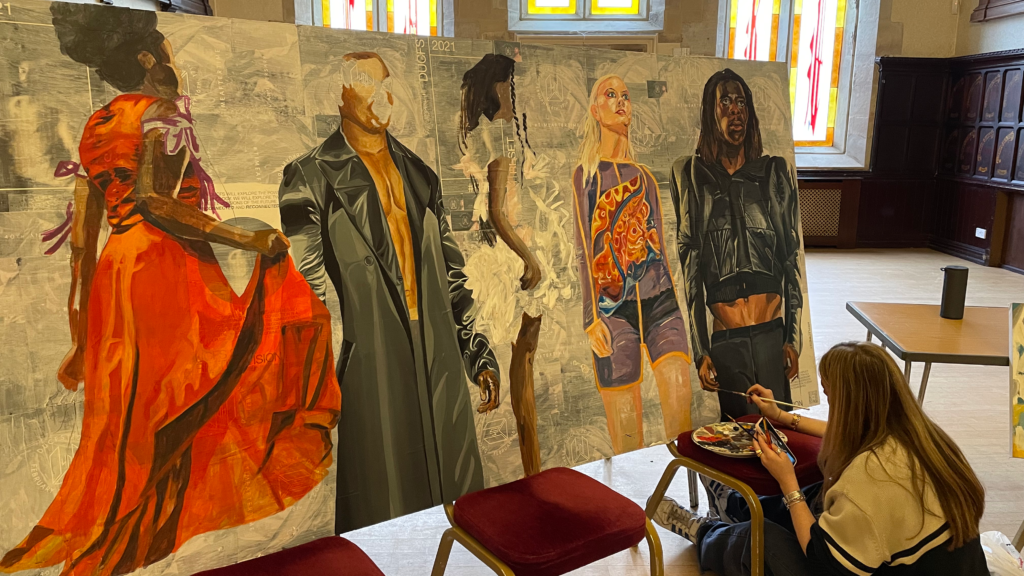
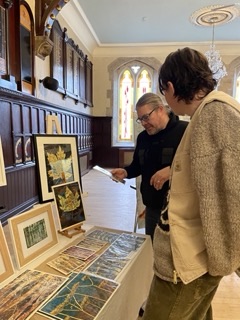
————-
–
–
–
–
—–
–
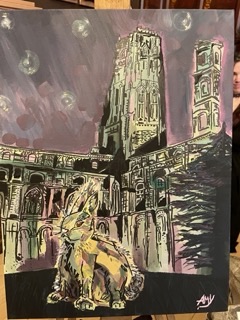
–
–
–
–
–
–
–
–
–
–
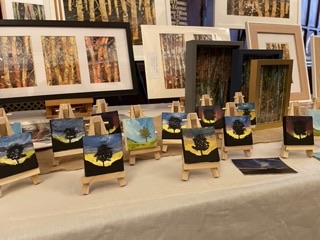
–
–
–
–
–
–
–
–
–
–
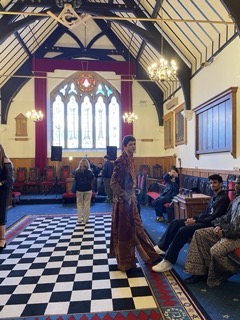
–
–
–
–
–
–
–
–
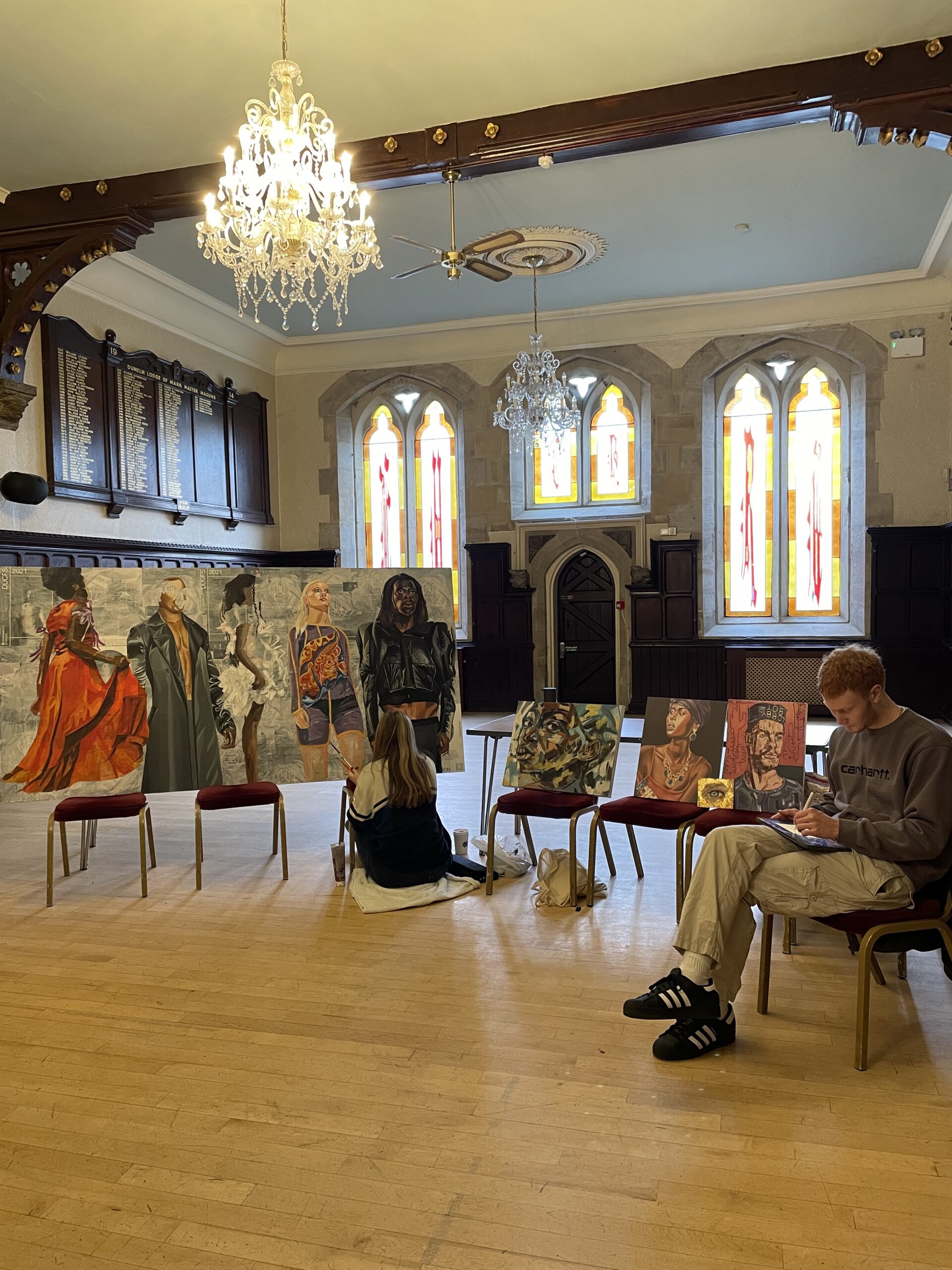
By Ida Bridgeman and Jack Fry.
DUCFS is often recognised, and rightly so, for its charitable endeavors and of course its main event. However, I believe it should be noted that through its events, it helps to bring Durham creatives together, cultivating a ‘scene’ or collective of sorts in which musicians, artists, designers and small businesses are able to collaborate and share their work. Last Sunday, we were at one such event. Normally, these events tend to take place in a pub, which Durham is not in short supply of, but on this occasion we ventured into a more unusual venue, The Masonic Hall. The Freemasons are a fraternal organization that trace their origins to the local guilds of stonemasons from the 13th century and an air of mystery often surrounds them. The event we were attending was an art exhibition along with the unveiling of some of the designers’ clothes, related to the 40th shows’ theme of ‘Time after Time’.
Upon entering, we took in the first piece, a purple and green rabbit in front of the Durham cathedral. Amy, the artist, with an engaging smile asked if we thought it looked supernatural or scary – if I’m honest it reminded me somewhat of the Netflix show Wednesday. With its dark, broken colouring, it looked as if it should have been on the wall of Wednesday Adams’ gothic dorm room. Fortunately, Amy soon admitted that she is a big fan of the series as she loves all things supernatural. Considering the theme of time, she found herself ‘thinking about the things it does not seem to touch’, thus the seemingly everlasting image of the cathedral took its form. Named ‘After Midnight’, Amy told us that the piece is ‘close to reality through the illustrative black lines’, and yet what draws the eye is that it is ‘fantastical through the colour palette’.
In the centre of the table is a purple-based starlit sky. ‘Fairyland awaits’ pictures a small girl stepping out into the hills, bathed in a magical, nostalgic light. The pink undertone evoked a fairy tale, far away from the passage of time, from an age of fantastical children’s stories.
We tend to know very little about what the artist was thinking, looking at a painting from the outside.
Quizzing Amy gave us hidden insights. For example, the fact that she drew the line of the cathedral while copying a picture, but upside down, so that the power of her brain wouldn’t skip a step and reconstruct what it thought the cathedral looked like. Perhaps we’re all secretly painting geniuses, we just need to turn the canvas upside down. I quietly concluded that this is unlikely, if my friends’ Pictionary interpretations are anything to go by.
Drawing ourselves away from the captivating gothic colours, we moved along to the next artist’s work, John Eric Rothwell, a local artist from Newcastle who’s ‘enchanted woods’ series continued on the mystical theme. Drawing his inspiration from long walks in the Northumberland countryside, his paintings of burnt oranges and turquoises depict tree trunks in a forest, playing with depth and perspective. His paintings of the forest toy with convention. The trees, rather than dark silhouettes punctuated with shards of light, instead glow with metallic copper and gold detailing against a darker background, created through the scraping back of layers of oil paints and wax that the artist built up.
My eyes then landed upon a series of tiny canvases, a professional painter turned child. An armful of pound store purchases each intricately coloured with a fine oil brush. Each is painted with the same tree in different seasons. Although small, the tree is unmistakably familiar to a girl from Northumberland. It takes the shape of the tree in Robin Hood. A sycamore, iconically poised in a gap along Hadrian’s wall, with hills rising up either side and a wide expanse of sky behind. These small canvases, painted to be sold as miniature gifts in the Hexham market, show the beauty that is found in both night and day. Through summer and winter, in and out of different seasons, the colours and backdrops change and yet each canvas portrays the same tree.
A key piece of art on display was the huge canvas, taking up one side of the room, a joint piece encompassing teamwork, inclusion, and charity. It is painted by one of the DUCFS artists at each exhibition or event. The piece sparks interest and inspires viewers at each of these events and ultimately will be auctioned off at the show in February, raising money for the Rainbow Trust Children’s Charity. The piece changes and evolves, and layers are added as time after time the artists come back to add and create to it.
Wandering up the wide staircases lined with old images of Durham, and past Freemason leaders, we made our way into a large hall. The hall was flanked with chorister-like benches and overlooked by a bright stained glass window decorated with ancient masonic symbols. Groups of models gathered on the checkerboard carpet, like life-size chess pieces, sipping red bull and swaying to the oh-so-cool tunes of Fred again.
No stage divided the models from the audience, rather we walked amongst the extravagant outfits, long trails and pointed sleeves. The clothes on display were part of Act 2 of the fashion show, designed to reflect the inner ‘turmoil and chaos’ of personal transition. Many of the designs had clear gothic influence, long sheer gowns, made up with layers of black fabric, pooled on the floor, like religious robes. The fabric glistened with green embroidery and sequins. Other designers contrasted these with more structural work, clean and hard monochromatic lines that jutted out of the tailoring. One notable piece was only complete when the two models stood together, bringing the shard like structure into focus.
We left feeling inspired and excited by the designs and artwork. If last Sunday was anything to go by, and you have managed to bag a coveted ticket to Februarys’ shows, then you have much to look forward to.
–
–
–
–
–
–
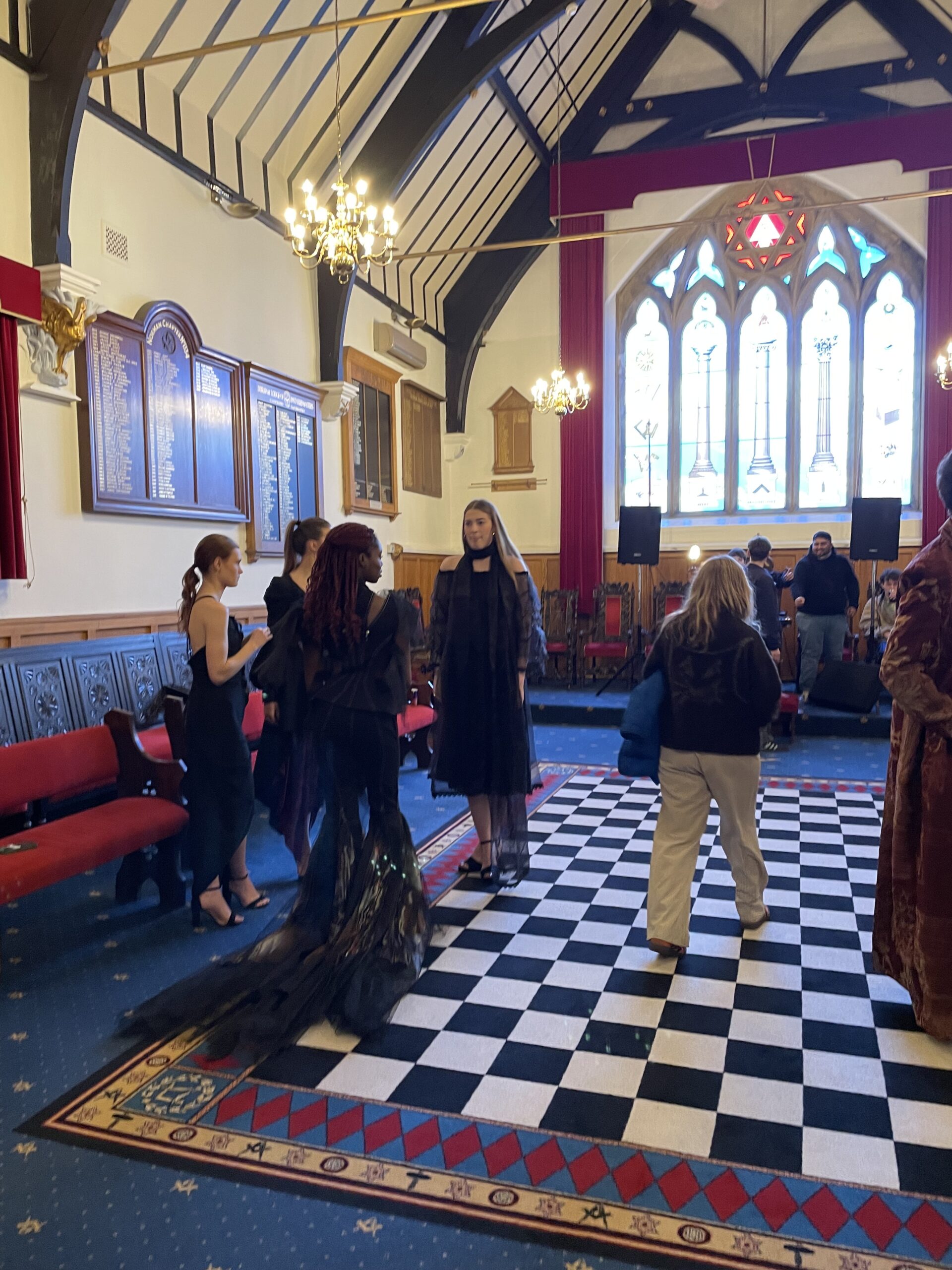
–
–
–
–
–
–
–
–
–
–
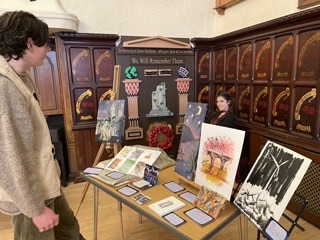
–
–
–
–
–
–
–
–
–
–
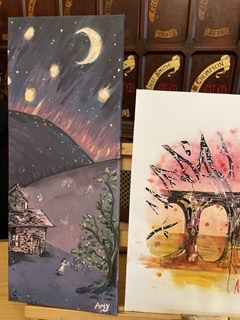
–
–
–
–
–
–
–
–
–
–
–
–
–
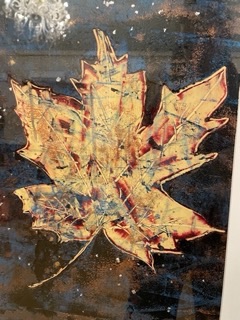
–
–
–
–
–
–
–
–
–
–
